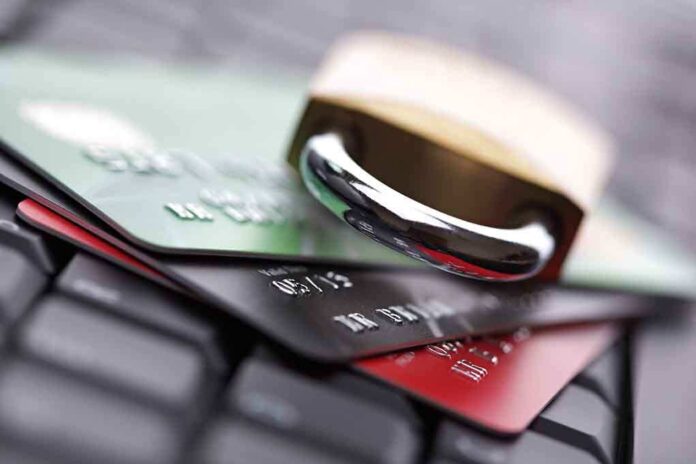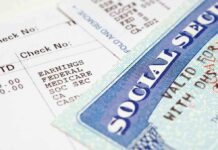
The moment you max out a credit card, you trigger a cascade of changes that can haunt your financial life long after the purchase, from an instant credit score drop to a cycle of stress and shrinking options—often in ways you never see coming until it’s too late.
Story Overview
- Maxing out a credit card instantly spikes your credit utilization, sending red flags to lenders.
- Monthly minimum payments jump, making it harder to catch up and easier to fall behind.
- High-interest charges can keep you trapped in debt even if you stop spending.
- Your borrowing power shrinks, making future loans or credit harder and more expensive to secure.
- Financial stress from maxed cards can affect health, relationships, and everyday decision making.
Maxed Out: The Tipping Point in Your Credit Story
Maxing out a credit card isn’t just a line crossed—it’s a financial event with ripple effects. The instant your balance hits the card limit, your credit utilization ratio rockets to 100%. Lenders and credit bureaus interpret this as a sign of risk, no matter how punctual your payments have been. The credit score algorithms are especially unforgiving; utilization above 30% is considered risky, and 100% is a distress signal. Even if you’ve never missed a payment, your score can drop within a single billing cycle after maxing out a card.
Monthly minimum payments also surge as your balance grows. If you’re used to paying $50, a maxed card could push your minimum to $150 or more. This hike is not just inconvenient—it can be dangerous. Most minimum payments barely dent the principal, with the bulk going to interest. As a result, every month you don’t pay down more than the minimum, you’re feeding the banks’ profits while your debt barely shrinks. The higher the balance and the interest rate, the more you pay just to stand still.
The Interest Trap: How Debt Becomes a Vicious Cycle
Credit card interest rates often hover between 20% and 25%—sometimes higher. Max out a card at $5,000 with a 25% APR and pay only the minimum, and you’re looking at more than $100 in interest each month. This isn’t just a math problem; it’s a behavioral trap. Every dollar paid to interest is a dollar not reducing your debt, and the longer you carry that balance, the harder it is to break free. This is how people with good intentions end up trapped in cycles that last for years, not months.
Once your card hits the limit, future borrowing becomes a gamble. Lenders scan your credit profile and see you’re maxed out—meaning your ability to take on new debt is questionable. Mortgage lenders, auto loan providers, and even other credit card companies may deny your applications or offer only high-interest options. In effect, maxing out a card doesn’t just hurt your score; it signals to the entire financial system that you’re stretched thin.
Stress and the Hidden Costs No One Talks About
Financial stress isn’t just an abstract concept—it’s a daily reality for many. Readers have described sleepless nights and constant anxiety after maxing out a card; the fear of missing payments or incurring fees is pervasive. The psychological toll often exceeds the financial one, influencing relationships, job performance, and even physical health. Money problems don’t stay on paper—they follow you everywhere, coloring every decision and interaction.
The solutions are straightforward but require discipline. First, stop all new charges and focus on payments. Debt consolidation, especially through a personal loan at a lower rate, can provide immediate relief and reduce your monthly outlay. Balance transfer credit cards offering extended 0% APR periods can also buy you breathing room, but these are temporary fixes. The real long-term strategy is building systems—such as emergency funds in high-yield savings accounts—to avoid the need for credit in the first place. The best offense is a strong defense against future financial shocks.
Rebuilding: Steps Toward Financial Stability
Escaping from credit card debt begins with awareness and action. Track your spending, create a budget, and automate payments above the minimum to tackle the principal directly. If you’re considering consolidation, compare personal loan terms and fees to ensure genuine savings. Balance transfer offers can be effective, but only if you pay off the transferred balance before the promotional period expires—otherwise, the interest rate can spike, putting you right back where you started.
Preventing another max-out requires more than willpower; it demands a system. Build an emergency fund, use high-yield savings accounts, and avoid relying on credit for life’s surprises. Regularly check your credit report to catch errors or fraud early, and maintain utilization below 30%—ideally under 10%. These habits restore control and reduce stress, putting you back in charge of your financial destiny.
Sources:
Best personal loans for debt consolidation
Top balance transfer card options












